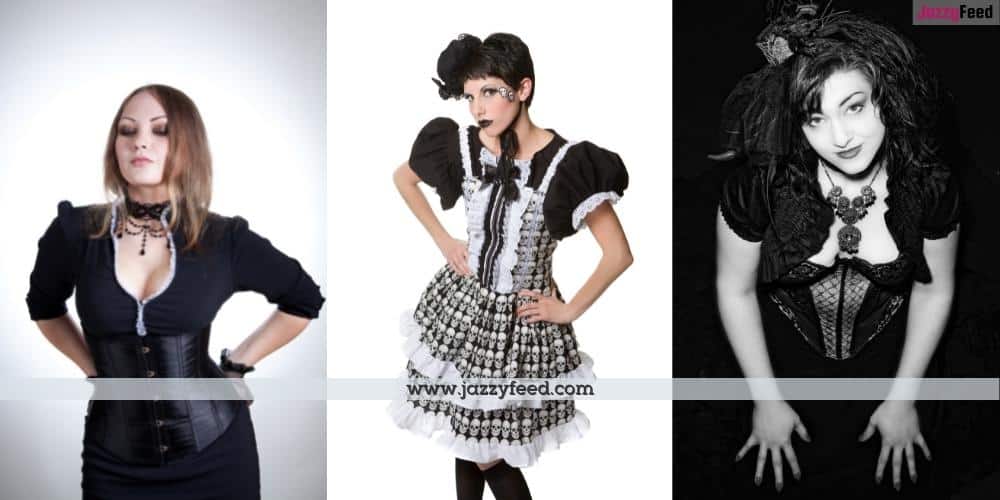Dark Cottagecore, as the name implies, is a darker variation of the very popular aesthetic of cottagecore. People enjoy the idea of living self-sufficiently, off the grid, and in the middle of nature.

Simplicity and harmony, as well as everyday care for plants and animals, are essential ideals. Most of the aesthetic’s themes and motifs are influenced by 19th-century European farm life, which includes a strong sense of nostalgia and wistfulness.
What Does Cottagecore Style Mean?
Cottagecore is characterized by a cheerful, friendly, and welcoming style, which is mirrored in the community. After all, baby lambs, picnics, beautiful clothes, flower fields, and strawberry pastries are primarily leftovers from the intense romanticization of agricultural life.
It’s a reaction to our fast-paced urban lives, which are dominated by cellphones, social media, stress, and worry. Beyond domestic labor, demanding deadlines, and city noise, returning to nature eliminates all labor.
Every vibrant and gay trend has a gloomy cottagecore equivalent, which is the case here. Dark or gothic cottagecore is extremely similar to cottagecore and features motifs like baking, country life, and woodlands, with a minor gothic twist.
Colorful flower fields are transformed into deadly plants and mushrooms, fairy tales are transformed into witch tales, and the sunlight is obscured by rain and fog.
Both aesthetics hold mother nature in high regard, with cottagecore praising its beauty and dark cottagecore viewing it as a powerful force that can be cruel and destructive.
Blood and gore, as well as mythological creatures such as forest cryptids, spirits, and witches, are sometimes incorporated into this aesthetic.
What is Dark Cottagecore Fasion?
When it comes to fashion, dark cottagcore is sometimes confused with ravencore, which favors gothic tones over warm colors.
Earthy colors and pastels dominate the cottagecore color palette, while fading browns, deep greens, and dusty yellows dominate the darker version.
Clothes can be made of linen, faded denim, or cotton, and lace, embroidery, or ruffles can be added to them.
They are largely inspired by dresses that witches are supposed to wear, but they also resemble fashion from a few centuries back.
Aprons, long gowns, overalls, skirts, and flowy capes are just a few of the clothing options available to dark cottagecore fans.
Lace boots, Chelsea boots, knit socks, clogs, and loafers are examples of footwear. The outfit is completed with pearls, chokers, crosses, ankhs, silver, and stones.
Makeup should be simple and earthy in color, such as red, yellow, and black, and should be influenced by nature. Some folks, on the other hand, love big smokey eyes and dark lips.
What is Dark Cottagecore Shoes?
Victorian-style lace-ups, soft booties, rubber rain boots, and embroidered floral boots are all examples of cottagecore boots. Cottagecore boots include cute bows, lace trim, and decorative accents.

History of Cottagecore Fashion
While reflecting a nostalgia-based subculture, the Cottagecore movement is typically associated with queer people and progressive ideas.
Online, all over the internet, there are signifiers of these apparently unrelated connections.
“Cottagecore lesbian,” for example, is a popular descriptor online right now.
Another nonbinary favourite is Goblincore, which depicts a universe in which frogs are canonically lesbians.
Then there’s Cottagecore’s clothes, which is crucial to folks who don’t follow gender preconceptions in fashion.
Cottagecore was discovered on Instagram by Evienne Yanney, a 16-year-old from California, when she wasn’t sure if she liked the way she dressed.
Yanney found the concept of fleeing away to a cottage “soothing” as a lesbian who felt the world was not embracing her for who she is.
Another politically infused feature that informs the modern Cottagecore image comes from social media accounts that fight for ‘Black Lives Matter‘ and similar social justice events.

